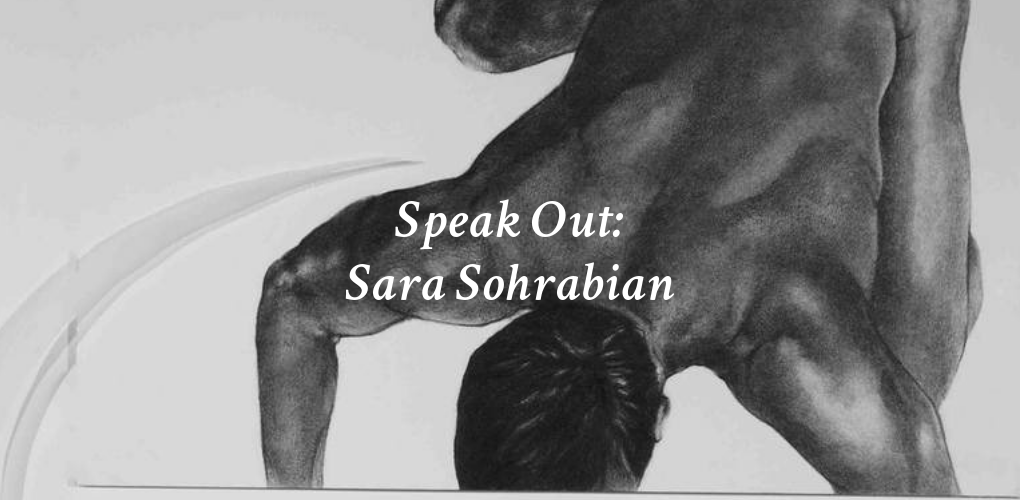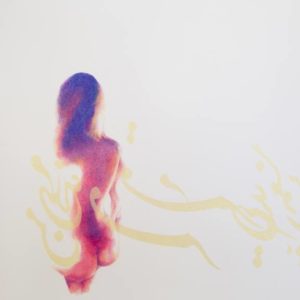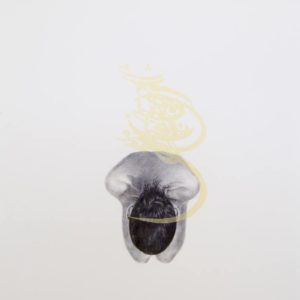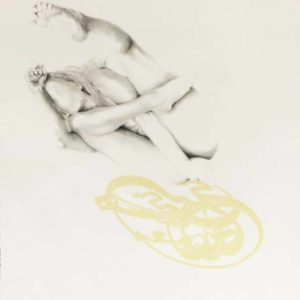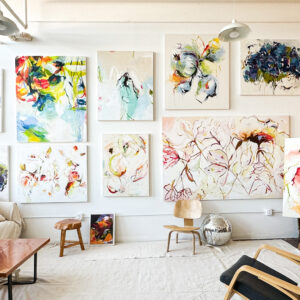Art News
 Speak Out: Sara Sohrabian
Speak Out: Sara Sohrabian
“Art is my language of self-expression; it is my free world.”
– Sarah Sohrabian
On the occasion of Women’s History Month, Saatchi Art’s curators spoke with artists about their process, inspiration, and the ways in which their identity as a woman is relevant to their art.
Iranian-Australian artist Sara Sohrabian has participated in numerous solo and group exhibitions across Australia and Iran, including Annandale Galleries and Mehrin & Arte Galleries. She received the Earle Backen Award in 2015 and went on to later be a finalist for the 64th Blake Prize.

What does it mean to you to be a woman in art?
I was born in a very traditional and religious country, which put a lot of difficulties and obstacles in front of women. I remember in second year of high school I wanted to pursue art as my future career. I received some negative responses from my teachers, some relatives and my father. There was a lot of immoral behaviors associated with females who showed interest in studying art. The pressure was too much, and I ended up studying mathematics (and I hated it so much). I read art related books and was practicing techniques whenever I found free time. When I finished high school, I had to stand up and fight to get permission to study art for my undergraduate degree. Art is my language of self-expression; it is my free world in which I can reflect on my experiences. I feel real when I create things. In order to answer the question “what does it mean to you to be a woman in art?”, I would say this: all of the hardships that I have experienced in my life as an Iranian female artist makes me a warrior, a fighter, and a woman who constantly needs to break the nonsensical traditional rules in order to gain her freedom of speech and to live by her basic rights as a human being.
Which female artist inspires you most — past or present — and why?
I truly admire and adore Frida Kahlo. I see her as a woman and an artist who has overcome a lot of barriers. Her life was not easy. She had a terrible accident when she was very young, but did not allow the incident to stop her life. The fact that, with all her physical limitations, she kept her faith and continued painting until her death is admirable. She followed her heart and was determined to continue her passion, no matter what. She was a warrior and never gave up.
What is your advice to a young woman who aspires to be an artist?
I would like to tell them it is not an easy path: there will be a lot of hurdles to overcome and that will coincide with self-doubt and fear. It is even harder if you are from a country that has a lot of traditional views and restrictions on women. You will consistently feel pressured and scared of breaking rules and traditions. For instance, as an Iranian female artist who has the interest in figurative art with nude subjects, I have faced censorship, sexual harassment and the threat of incarceration if I had wanted to publish my work in my country. Because of this, I had to move to Australia to follow my passion freely. My advice to young women who aspire to be artists is to follow your passions and listen to your hearts. Do not give up on what you truly love and what you truly are.
What are the themes you pursue in your work?
The themes that I pursue in my work are as follows: self exploration, friendship, love, memory, identity and emotion. Without exception, my artwork is deeply affected by ideas and emotions that result from experiences of my own cultural heritage, as well as those encountered in my new environment. I find the human body very interesting and love its form. I am constantly playing with its composition in order to reflect and portray my own experiences. I also combine the bodies with elements from my culture such as Persian poetry written in Farsi calligraphy.
Can you walk us through your process? Do you begin with a sketch, or do you just jump in? How long do you spend on one work? How do you know when it is finished?
In order to create my artworks, I use live models. I begin by taking photographs of them in a range of poses and then I use these images as core reference in my drawing. Using this approach, I try to constantly reflect the notion of the past and the role of memory for recording and recalling, as well as the artist’s perception in the present. I use the camera symbolically, as a device to capture the memory of a moment, and as a record of my observations. The composition of the work will change from the original photo, in accordance with my feelings at that moment. I also experiment with contrast in my drawings, based on my concerns and feelings. There is no set timeframe for how long a piece takes. It really depends on the idea behind the work — I can spend days solely on research. For example, I wrote 30 pages about my Rupture/Rapture series, and one of the pieces took me around 22 hours to complete. I cannot really explain how I know when a work is done. I think it helps having ten years of experience and two degrees in Art. You just know by looking, and sensing completion.
If you couldn’t be an artist, what would you do?
I would definitely choose to be an artist again but in a different field. If I had another life, I would love to be a professional dancer. Unfortunately, this dream did not come true because of my country of birth and religious background surrounding sexual identity and body stigma. However, I still love music and enjoy dancing. I believe my life would be incomplete and incredibly boring without my passion for art. Art is my life!
